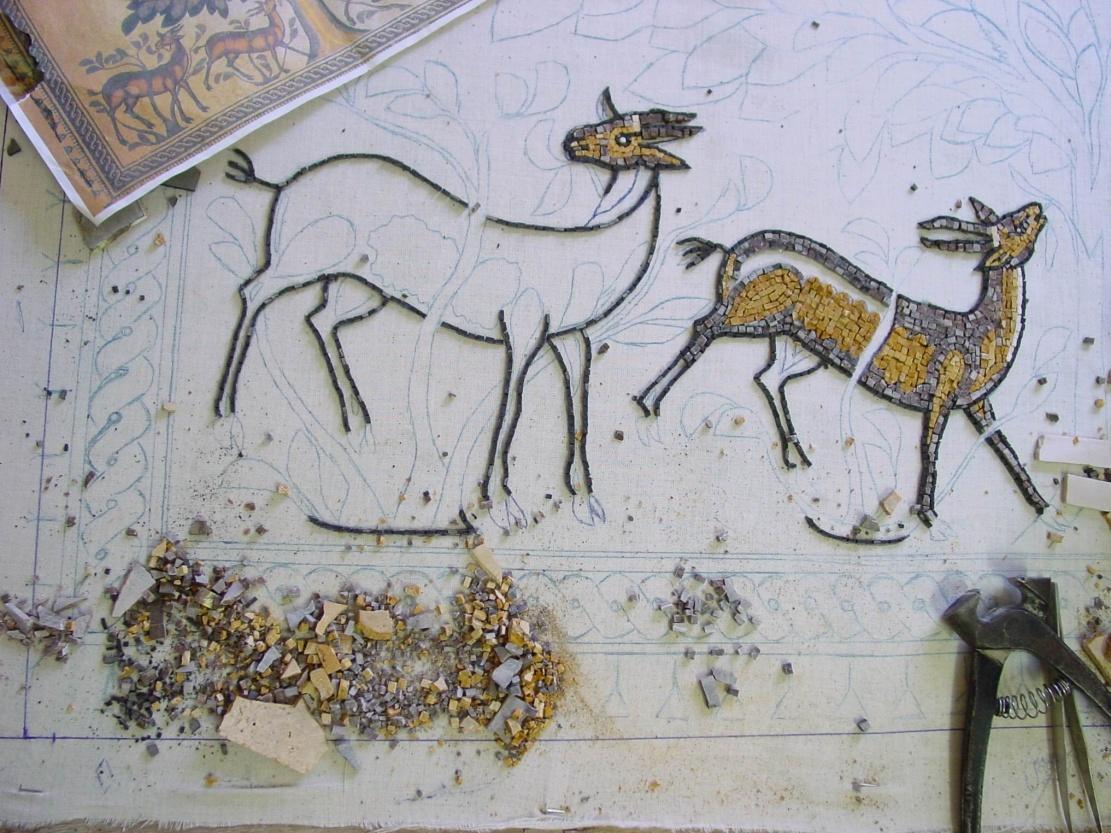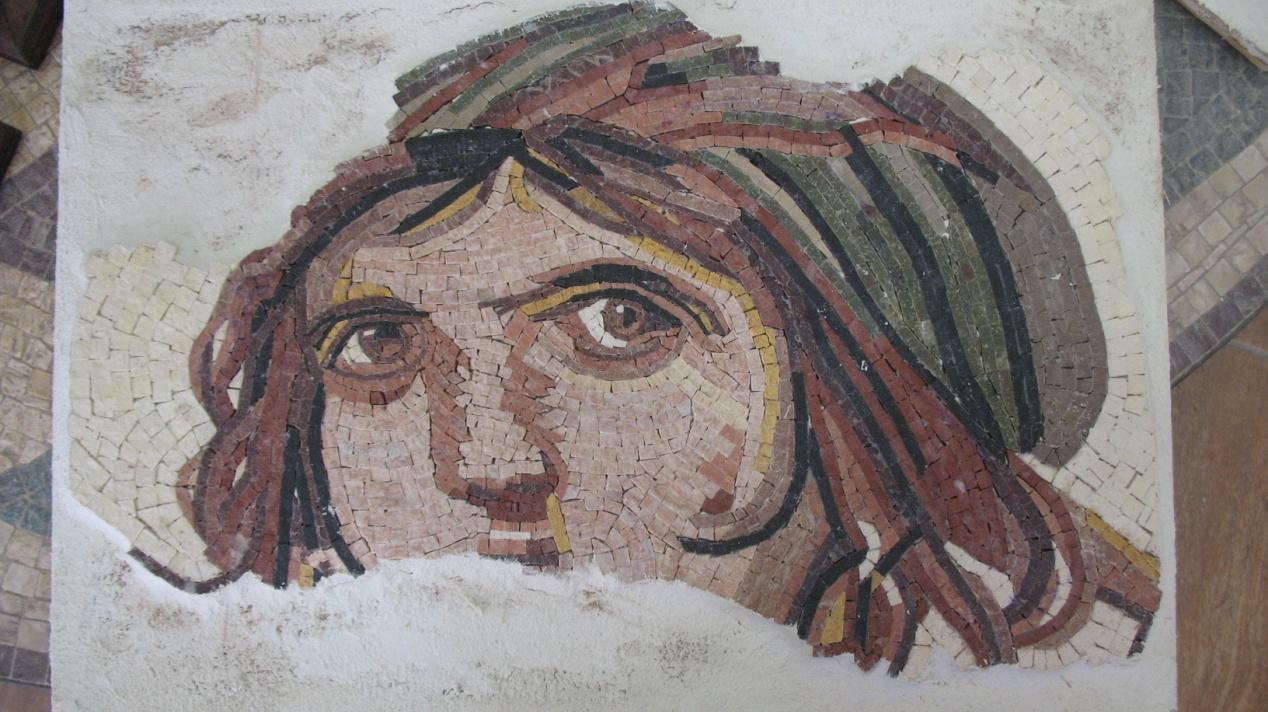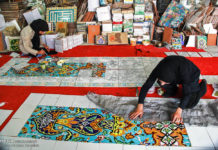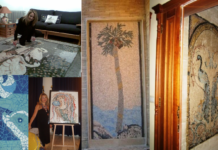Mosaic techniques were developed by the Sumerians in Mesopotamia 4,000 years ago. They were coloured cones in geometric designs that were fixed and laid into buildings. In the Transjordan, mosaics were made during first to eighth century AD. It is one of the oldest techniques still alive and represents the unique identity of the Jordanian history and culture.

The main raw materials used for mosaic designs are stone, marble, glass and sometimes even silver and gold. The geology of Jordan gives craftspersons an easy access to natural stone colours ranging from black basalt to white granite, with a variety of tones in between such as ochre, yellow, dark green, brown and more. Designs often represent the environment of the area which include animals like gazelle, birds, and plants.
The natural stone is cut into 1x1cm bars (10 -15 cm long) by the use of electric machines. These bars are cut into smaller pieces shaped as cubes, parallelogram, or into any shape the design requires. A design is drawn on canvas and the stones are individually inlaid using tweezers. Once the design is completed, a layer of cement is poured over the design, filling the gaps in between the stones. The canvas is then removed and turned over the picture and the surface polished. Working with mosaics requires much patience and skill in harmonising colours.

Inlaying mosaic stones, photo: Adeeb Atwan
Young Jordanian artists who graduated from the Madaba Institute for Mosaic Art and Restoration learn how to create distinguishing mosaics. They use natural stones in their products and create new designs which are unique to Jordan.
Mosaic art has an wide range of products such as wall mosaic pictures, tables, chairs, coasters and boxes as well as reproduction of historical mosaic. Such items are widely used by Jordanians in their homes today as well as gifts for weddings, official events and cultural celebrations. It is also purchased by tourists.
The estimated number of mosaic artisans across Jordan are over 450. Madaba, home to the world’s largest collection of ancient mosaics, also known as The City of Mosaics, is located in the central area of Jordan and is famous for its creativity in mosaic art. It is home to master mosaic artisans and the most important mosaic map. The Madaba Mosaic Map is an exceptional piece of art (sixth-seventh century A.D.). It is a documentation evidence that represents the biblical land from Egypt to Lebanon, including Sinai, Palestine, and Transjordan. Jordan government recently nominated Madaba as the World City of Mosaic Craft to the World Craft Council competition.
Tourists can find mosaic items in various bazaars and in historic areas all around Jordan.

Replica mosaic from Madaba city recently made by Moath Al Anati, photo: Saleem Ayesh
Mr. Moath Al Anati is one of young well-known mosaic crafts persons from Madaba. At the age of thirteen, he started learning and working as a mosaic artist. His work started to gain recognition from the year 2008 when he graduated from the Madaba Institute for Mosaic Art and Restoration. Now, he is working at the Philadelphia workshop in Madaba.




